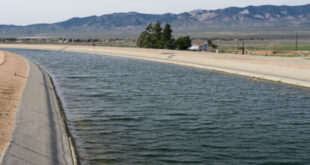After 13 years of work, a plan to reduce nitrate contamination and salt build-up in the Central Valley’s groundwater and surface water supplies has come to fruition. Development of the Central Valley-wide Salt and Nitrate Management Plan, along with the stakeholder initiative Central Valley Salinity Alternatives for Long-Term Sustainability, began in 2006.
The State Water Resources Control Board (SWRCB) approved a long-term plan that addresses the buildup of salt and nitrates in the Central Valley’s groundwater and surface water supplies on Oct. 16. Salt and nitrates in the Central Valley are the result of both historic and current-day agricultural, municipal and industrial activities.
The collaborative effort between the Central Valley Regional Water Quality Control Board and multiple stakeholders including representatives from agriculture, environmental justice advocates, water agencies, cities and communities impacted by the Central Valley’s water quality problems. Three primary goals address the salt and nitrate concerns:
- Ensure a Safe Drinking Water Supply: Assembly Bill 685 by former Assemblymember Mike Eng (D-49th District-Alhambra), declares that every human “has the right to safe, clean, affordable and accessible water adequate for human consumption, cooking and salinity purposes.” Since numerous Central Valley communities’ water exceeds the maximum contaminant level of nitrates, this goal aligns with AB 685 and is top priority to ensure a safe and reliable water supply for all residents in the region.
- Achieve Balanced Salt and Nitrate Loadings: This goal seeks to establish a balance of the salt and nitrates in groundwater that underlies each permitted or managed area.
- Implement Managed Aquifer Restoration Program: This goal is intended to restore salt and nitrate levels within groundwater basins, subbasins and locally managed areas when reasonable and feasible. While restoration focuses on restoring beneficial use it will also seek to minimize and prevent further degradation of supplies that are currently meeting the water quality objectives.
While approving the Central Valley Plan for the reduction of salt and nitrates in groundwater and surface waters, the State Water Board directed the Central Valley Board to return in one yer with targeted revisions to strengthen the plan which must include:
- Strengthening requirements to reduce nitrate contamination of groundwater basins.
- Accelerating the timeline for achieving this goal. Dischargers will be required to reach this goal within as short a time as practicable and not to exceed 35 years.
- Requiring enforceable interim deadlines and a final compliance date for dischargers to meet their goal of reducing nitrate discharges.
- Requiring residential sampling programs that provide water quality testing for residents whose water supplies may be contaminated.
The Central Valley Board has also adopted Basin Plan Amendments that implement salt and nitrate management programs across Tulare Lake, Sacramento and San Joaquin river basins. These 2018 amendments contain regulations approved by each of the nine state regional water boards to control discharge of waste and other factors affecting water quality.
 California Water News Daily Your Source For Water News in California
California Water News Daily Your Source For Water News in California


